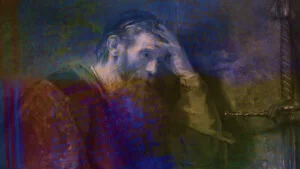But I wanted to write this in order to put it into the hands of the people from whom I cannot ask back what I have already published and needs correction. … Hence those who are going to read these works should not imitate me in my errors but in my progress towards the better.
—St. Augustine, Revisions, Prologue, 3
(New City Press, 2010: 22-23)
I have come to a point in my shared explorations where I desire to revisit earlier reflections to do what may need to be done to correct, to nuance, to reformulate, or to make additions to what I have written. I cannot and should not deny what I have written, but like Augustine in his Revisions, I hope to be making progress in my thought and in the expression of my thought both in dialogue and in writing.
In an earlier piece (“When Is a Human Being Most Like a Human Being?”) I had offered the thought that we are most human when we image the one true God. This imaging has a multitude of characteristics, but I focused on “an external and an internal component.” Externally, we image God when we are engaged in creativity. I would add here that creativity involves helping others flourish, because, like God, we care about individuals and the community. A central element in the realm of the internal component was submission to God and to His will. It was the element of submission that immediately confronted us with the problem of sin, manifested in rebellion against the Creator and ultimate Savior of humankind.
There are two recent “re-visitations” that motivate me to consider another facet of “imaging” God. The first of these is the continued racial tensions existing between some African Americans and members of the dominant Caucasian community. The second is my recent engagement with the book of Lamentations. Imaging does include care for others and for the community. This concept of care needs further development, further intensification. At the risk of being repetitious to a nauseating degree, let me again state that my message is directed to the Church community. The pervasive impact of sin may render what I am about to say totally nonsensical to the surrounding non-believing community. It should not be so in the Church of Jesus Christ, regardless of racial/ethnic identity.
Because of present racial tensions, it may not have been wise for me to begin reading Judge Andrew P. Napolitano’s book, Dred Scott’s Revenge (Thomas Nelson, 2009).We … may need to lament our nation’s dark side … while then imaging God in mercy and forgiveness. The reminder, for example, of slavery being maintained and protected in the forging of the Constitution, itself, brought great sorrow. But then I was challenged by another reminder: “The steadfast love of the Lord never ceases; his mercies never come to an end; they are new every morning; great is your faithfulness” (Lamentations 3:22-23 [ESV]). To image God in a way that only believers can approximate may include the grace to have mercy, the capacity to forgive and to usher in healing and restoration. We rooted in the Black church, in particular, may need to lament our nation’s dark side with its continued effects, while then imaging God in mercy and forgiveness. This is an intensification of “caring” for others, individually and corporately.
Through the grace of the Lord Jesus Christ, I am and am becoming a true image bearer of God. Lord knows, however, how much I personally struggle even with what I have just thought and written.








Comments
Be the first one to make a comment!